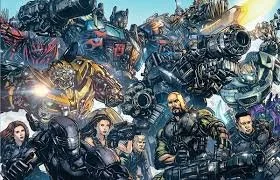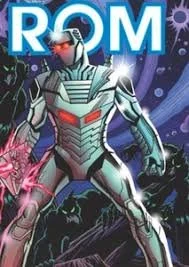I love all types of cinema crossovers. From seeing The Jeffersons crossover with Archie Bunker to NBC’s Pretender jumping into Profiler, I enjoy them all — even the ones that failed with audiences. So, why haven’t Hasbro’s HCU projects been successful like other Hollywood cinematic universes? To figure out this “debacle,” I will discuss the challenges facing HCU producers at Paramount Studios, the opinions of older and younger audiences, where the HCU should be now, and why the process is taking so long to complete.
The challenges facing Paramount Studios (tasked by Hasbro to create the HCU) can be summed up in one word: money. The Transformers films have cost Paramount about $1.42 billion to produce, while the G.I. Joe movies have cost around $415 million. With such high price tags leading to both hits and misses, it’s clear that new budgeting strategies are needed for future HCU projects. Paramount also faces competition, since many other cinematic universes are in development. This makes advertising crucial, but deciding what exactly to advertise becomes difficult when the studio hasn’t defined what the HCU is, where it’s going, or who its central focus should be. Before Paramount and Hasbro can create their version of “Thanos” — the unifying reason for the MCU — they must first understand their audience.
Older audiences, who grew up with Hasbro’s cartoons in the 1980s, hesitate to invest in HCU films. For them, the toys themselves — like G.I. Joe figures not fitting into Transformers vehicles — suggested that these worlds weren’t designed to connect. Still, some Gen X and Millennials did attempt to “mix-play” with the toys, showing that crossover interest exists. The challenge is convincing these audiences that the HCU can actually work on the big screen.
Younger generations, meanwhile, are fatigued by Hollywood’s endless cinematic universes, many of which prioritize world-building over good storytelling. This fatigue showed when Universal’s The Mummy reboot (2017) failed with audiences, just two years after Paramount and Hasbro announced their HCU plans. Yet research shows younger viewers are drawn to fresher ideas, as proven by the success of Sonic the Hedgehog (a character that debuted in 1991). This suggests that if the HCU starts with a truly entertaining story, it could capture the interest of younger audiences and regain momentum.
According to Google, if Disney’s MCU had moved at the same slow pace as Paramount’s HCU, it would have only reached a few crossovers like Guardians of the Galaxy, The Inhumans & Kree, Doctor Strange, and maybe Fantastic Four. Paramount has only teased one Hasbro crossover so far — a situation similar to how 20th Century Fox hinted at an Alien vs. Predator connection in Predator 2, which took twelve years to pay off. Originally, Paramount planned to build crossovers between G.I. Joe, ROM, Micronauts, Visionaries, and MASK, all connected by a fictional group called Unit: E (similar to Marvel’s S.H.I.E.L.D.). Learning what “could have been” makes it frustrating to see how long Hasbro has waited to seriously attempt this universe.
Even in the 1980s, Hasbro dabbled in crossovers, as seen in the Transformers episode “Only Human,” which featured Cobra Commander. But interviews with Hasbro cartoon creators Larry Houston and Michael Charles Hill in 2024 revealed they never took the crossover idea seriously at the time. In contrast, Paramount’s live-action Transformers films became major financial successes, while G.I. Joe never achieved the same returns. This imbalance makes it difficult to argue that a crossover would benefit both franchises equally.
Of course, external factors like Covid-19 and Hollywood strikes also slowed HCU development, but those challenges were universal across the industry. The bigger issue is whether Paramount can create a compelling entry point for audiences. One potential solution is ROM the Space Knight. Unlike Transformers or G.I. Joe, ROM never had a cartoon or film adaptation, existing only in comics and toys. A well-written live-action or streaming project focused on ROM could offer a cost-effective way to introduce fresh energy into the HCU. If ROM succeeded, Paramount could then redirect attention back to larger crossover projects.
But audiences may not have to wait for ROM to see hope for the HCU. One promising sign already appeared in Transformers: Rise of the Beasts. Actor Anthony Ramos, as Noah Diaz, not only connected strongly with audiences but also donned a high-tech exosuit that clearly opened the door to G.I. Joe’s world. Both the character and the suit serve as a natural bridge between Transformers and Action Force, showing how Hasbro properties can be linked on screen. If Paramount builds on this foundation, Noah Diaz and his suit could become the connective tissue that helps the HCU finally move forward with confidence.

